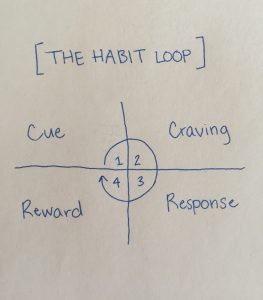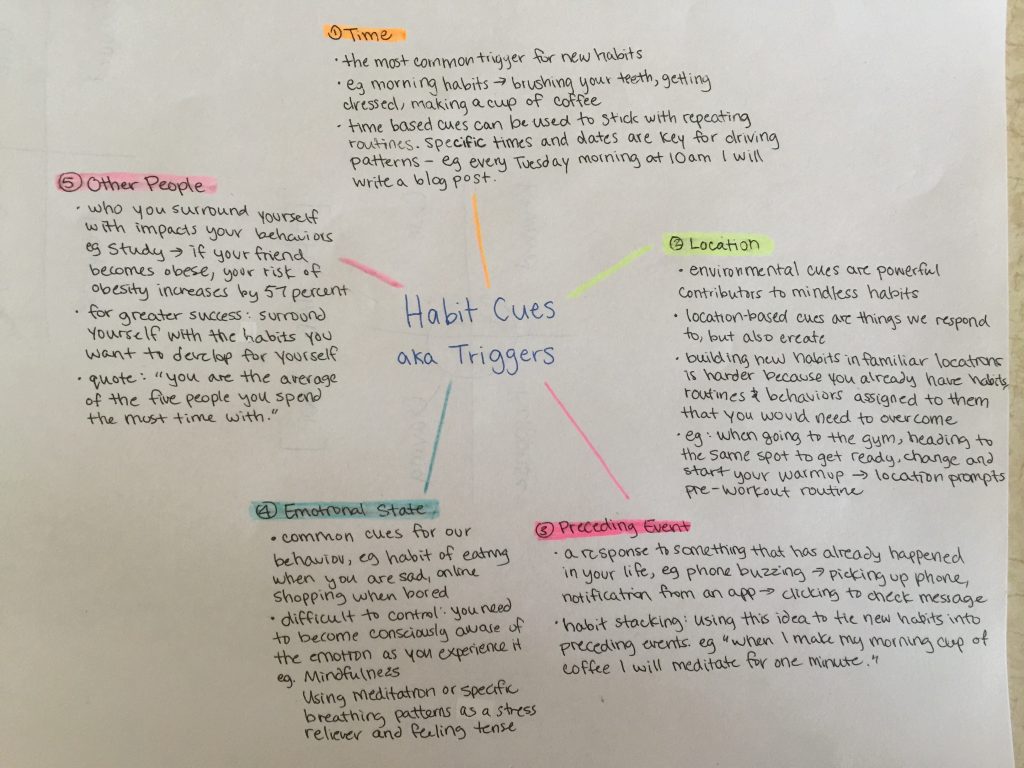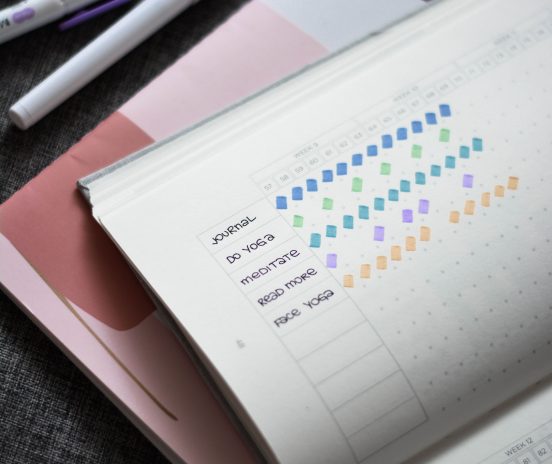This week, I’ve continued to my research on the science behind habits. My learning focus is on deepening my understanding of the reward system of the brain and its relationship with habit formation.
As I mentioned in my last blog post, the first resource that I chose was an academic paper. This article was particularly informative, breaking down the differences between habits and habitual behavior, as well as the phases within the habit formation process. However, I found it a bit difficult to understand a large portion of the medical jargon used in the article, often slowing down my reading which was quite frustrating at times. As a result, the resources i have chosen this week are in different formats: a TedTalk video, and two blog-type articles.
What I researched: “The Habit Loop” article by James Clear, “The Dopamine-Seeking Reward Loop” by Susan Weinschenk and “A simple way to break a bad habit” TedMed Talk by Judson Brewer. I have judged the reliability of these resources based on the reputation of the platform it resides on, whether or not sources are cited, and the overall quality of its explanation (is the sound/video of good quality, is the writing appropriate for the intended audience etc).
Clear and Weinschenk’s articles are clear and frequently link to outside sources and references. While both pieces are written in a sightly informal tone, they still effectively convey their ideas in a straightforward and academic manner.
Brewer is an American psychiatrist, neuro-scientist and author. His talk on habits is broadcasted on TedMed, an independent event focused on health and medicine that operates under TED conferences.
Summary of the resources
The idea of a habit loop has been well documented – the majority of the articles and videos I have referenced so far have discussed this concept. Clear‘s article breaks down the idea of a habit loop as a cycle made up of: Cues, Craving, Reward & Response. He focuses on the first part of the loop (cues/triggers) and briefly explains the idea behind each.
Below I have included some images to visually represent my understanding of the key ideas from the article.


Weinschenk‘s article discusses the role of dopamine plays in the ‘pleasure’ systems in the brain. Although this article focuses on the dopamine cycle that occurs from social media use (specifically scrolling through news feeds), I still think that the information is applicable to the idea of what fuels habit behavior.
In essence, dopamine is a chemical, ‘discovered’ in 1958 by Arvid Carlsson and Nils-Ake Hillarp, which motivates people to seek/act out on certain behaviors; it increases your level of curiosity & goal directed behavior and fuels your search for information. This dopamine ‘wanting’ system is especially sensitive to ‘cues’ which signify that a reward is coming. When the brain experiences this cue (visual, auditory, time, location etc), it sets off the dopamine loop. The anticipation for the reward ‘traps’ the person in the cycle of behavior as the dopamine system doesn’t have satiety built in, meaning sometimes it takes a lot to reach satiation (to be satisfied) before you stop.
Brewer‘s TedTalk focuses on the reward system in the brain and how it is a learning process of positive and negative reinforcement. When the brain experiences something it likes, it will send a signal to remind itself of the experience in order to repeat it next time. Brewer reiterates the idea of context-dependent memory (AKA cues) and how these trigger certain habitual behaviors.
For breaking a bad habit: Brewer explains how mindfulness training – thinking and focusing deeply on your experience in the moment – is a good way to ‘disenchant’ yourself from unwanted behavior. The prefrontal cortex (which, from an evolutionary perspective is the youngest part of the brain) is like our cognitive control center – it knows on an intellectual level that some behaviors are unhealthy for us, but when placed under pressure, it shuts down, letting us fall back into our old habits.
Mindfulness is a great way step out of the process by being curious about your behavior. This feeling of curiosity is naturally rewarding, which leads you to stop and reflect on the experience, rather than simply blindly following through with your body’s response to the craving, or contextual cue.
My reflection of the resources
I really enjoyed reading and learning from the TedTalk and two articles this week. I found each source to be extremely effective in breaking down the different types of cues which may trigger certain behaviors and providing practical, real-life examples for each which made it easy to relate to my own life.
I’ve found that I work better understanding and interacting with multi modal sources rather than strictly print/text, so moving forward I will work to find resources that which match this criteria.
My plan for next week
Next week, I plan to create a habit change plan for increasing physical activity and monitoring my social media use. I will base my plan on the research I have done on habit formation and ideas surrounding cues, rewards and response. In addition, during my one-on-one meeting with Dr. Irvine last week, I received some suggestions regarding apps to try that could aid in my inquiry. I hope to download the app “Daily Habits” and explore and document my experience with it – its advantages & disadvantages, and effectiveness in contributing to my habit goals.






Comments by leona